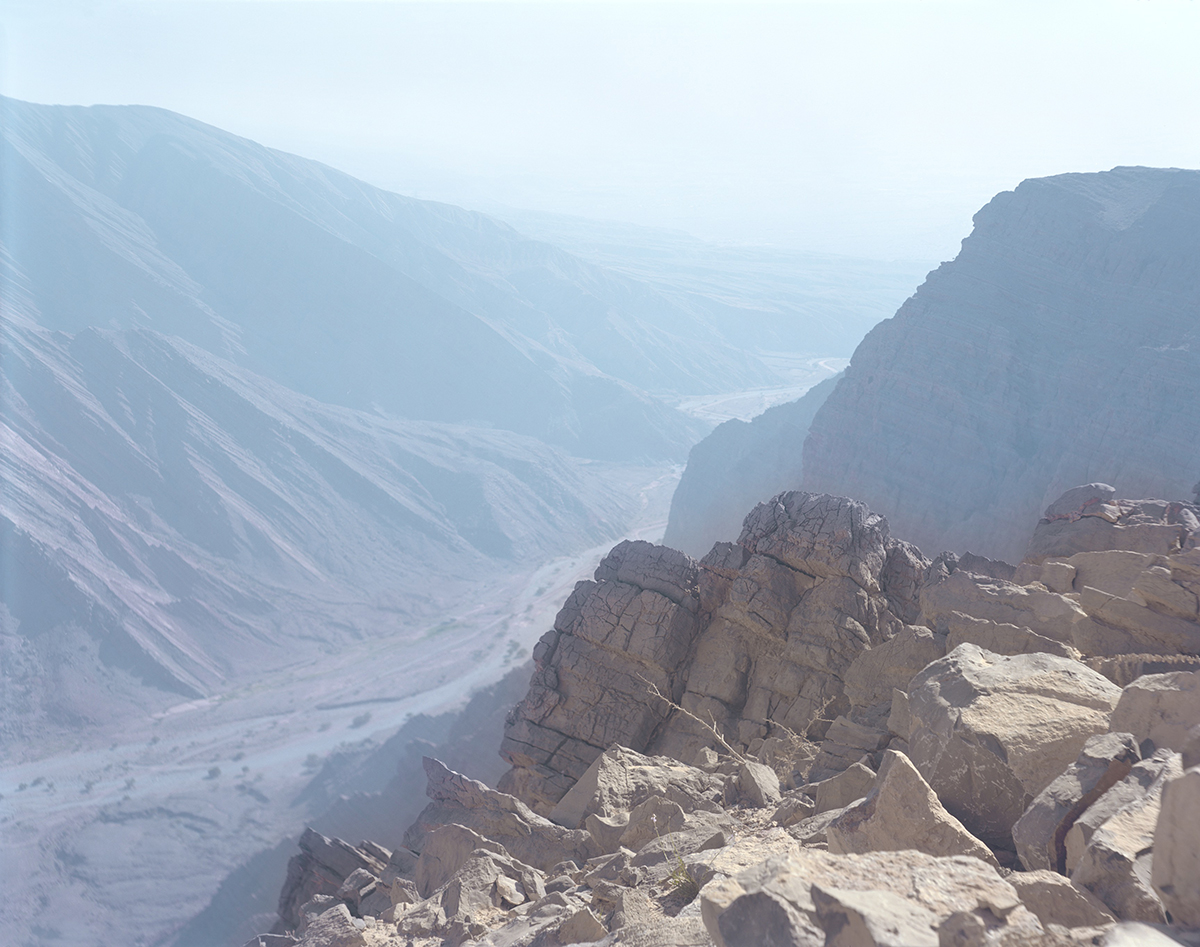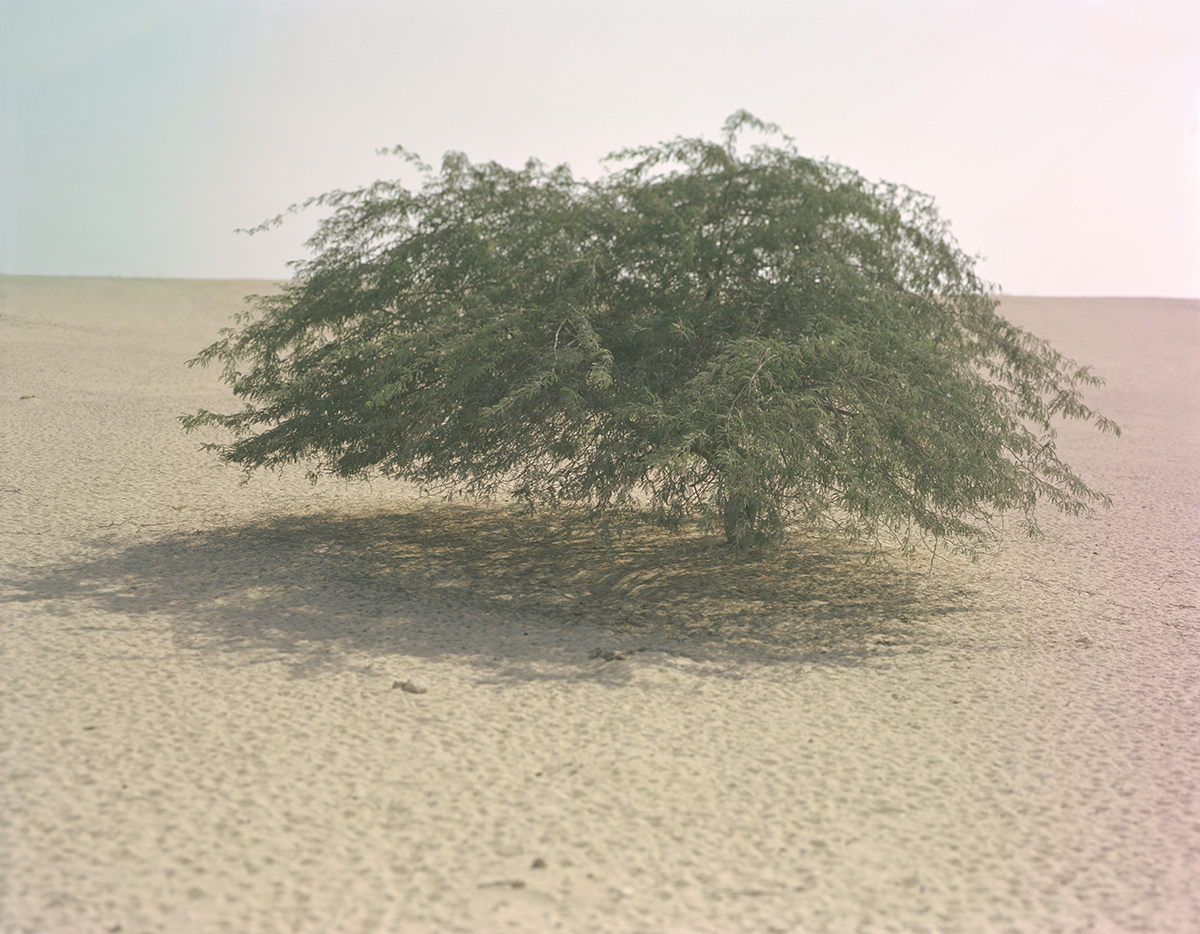Photoworks Director, Shoair Mavlian, looks at Steve Macleod's latest series, Hal, examining the topographics of the United Arab Emirates.
‘When I move, I break away from all sorts of local provincialisms. What is international or non-provincial is to be found in the air between particular places.’
Per Kirkeby
Steve Macleod has been photographing the British and Scottish landscape for several decades, he has also spent a considerable amount of time in the United Arab Emirates, however, it’s only now that these two parts of his life and work have merged, resulting in the new body of work Hala.
In 2015 after several years negotiating permission, Macleod was granted access to enter and photograph the Al-Hajar Mountains, a remote, desolate and largely deserted area in the United Arab Emirates. Uninhabited for several decades Al-Hajar is the highest mountain range in the eastern Arabian peninsula and is rarely accessible to westerners. When discussing his plans with local Emirati he was advised, ‘don’t go, there’s nothing to see’. However, it was this very nothingness Macleod was looking for.
He explains, ‘I wanted to steer away from the desire to record the topographics of the landscape and instead was interested in what would happen if there is no subject to photograph? What if there is just photography?’


In Hala Macleod avoids the desire to produce a document, but instead attempts to portray the experience of being in the space. There is no subject, no destination, no beginning or end. This ambiguity is reflected in the title, Hala. Meaning halo or aura in Arabic, it represents the desire to capture the experience or feeling of being in space rather than the landscape itself.
As a total outsider, visiting this desolate and unfamiliar area was invigorating, Macleod explains, ‘I needed to strip back my idea of landscape photography and to do this I needed to remove myself from the British landscape which I know so well.’ It is often the unknown which sparks new experimentation, as described by Per Kirkeby, when we remove ourselves from our provincial environment, we find clarity in unexpected places.
Drawn to the inhospitable environment of the mountains, Macleod produced over thirty images over the duration of several trips. Shot on a large format camera there is deliberately no point of focus, as the landscape drops away from the foreground to the background, left and right, resulting in a democratic plane of focus. The texture and complexity of the image therefore doesn’t come from the subject or point of focus, but instead from the subtle colour tints visible throughout the series. These are not straight photographs, nor are the hues a result of a fogging or fault in the film, but instead they’re produced from the act of painting in camera.
Macleod who is refreshingly open about his history of mental health, recalls how when undergoing psychotherapy a few years ago, he was introduced to colour theory and encouraged to explore what colours resonated with him. Later he began to experiment with paint and colour theory in his photographic practice. Using sample pots of household paint Macleod embraced chance and embarked on the performative act of coating the inside of the bellows of the camera with paint, resulting in hues of colour reflected onto the image. Macleod explains how ‘The colours act as a bridge between me and the landscape, they’re a symbol of my mental health and a record of how the landscape made me feel’.
The series is eerily uplifting, with a haze of optimism suggested through the pink and orange tones. There is, however, an interesting contradiction between the subtle tints of pastel and the destructive act of filling the bellows with paint which ultimately irreversibly damages the equipment. This tension between the act of creation and destruction, precision and chance, is evident in much of Macleod’s practice, however, here in these large scale colour works, it feels like a true departure-point filled with welcome aberration and a sense of underlying excitement.


Although a technical master, who has taught and mentored several younger generations of photographers, his inspiration is rooted in painting and the shared history between painting and pictorialism in the late 19th and early 20th century. In the lead up to making Hala, Macleod spent time researching Tonalism, the Linked Ring Group and the Photo-Secession. With this in mind, it is not surprising that the act of painting and the subtle tonality produced, is key to this body of work.
On the surface Hala exudes a meditative quality, calm and uplifting with a sense of freedom. However, there are several layers to unpack, and the work can at the same time be interpreted as a performative act, an encounter with the landscape and a record of the process of image making.

Steve’s work shows at Photo London 2018 at stand D8 with Black Box Projects.
For more information on Steve’s work, visit his website.
To learn more about Black Box Projects, visit their website here.
For more interviews from our Ideas Series, click here.





